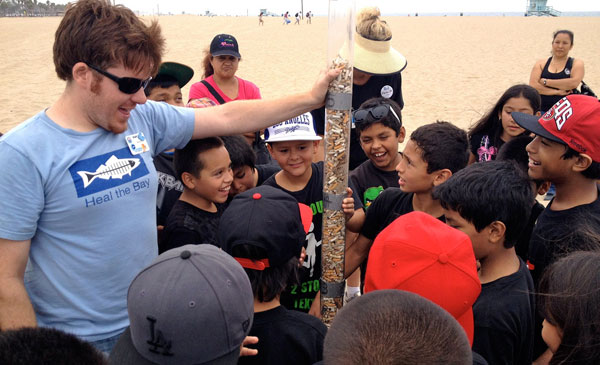The California legislative session ended on August 31, and Governor Brown now faces the task of either signing or vetoing the bills that have landed on his desk. Like other legislative sessions, this one culminated with a flurry of lawmaking. Among the bills that squeaked through during those last few days included important pieces of legislation that will protect and enhance California’s water bodies and coastal resources.
Below we’ve highlighted a couple of environmental bills that Heal the Bay supported that passed, as well as two that did not.
Passed
SB 1066 (Lieu). This bill, currently pending before the Governor, gives the State Coastal Conservancy explicit authority, currently lacking in existing law, to address climate change impacts as part of its broader mission. SB 1066 also requires the Conservancy to give priority to projects that maximize public benefits. Approximately 80 percent of California’s population resides and works within 30 miles of the coast. Thus, the effects of climate change, including extreme weather events and a rise in sea level, could result in major economic, social, and ecological problems in California. The Coastal Conservancy, a non-regulatory agency, was created to protect and enhance coastal resources and urban waterfronts. By signing SB 1066 into law, Governor Brown will give the Coastal Conservancy the tools necessary to protect our coast as the climate changes.
Signed into law
SB 1201 (de León). This bill was sponsored by our colleagues at Friends of the Los Angeles River. Heal the Bay applauds Governor Brown for signing this significant bill into law. SB 1201 provides for public access to navigable waterways, including the L.A. River, for educational and recreational purposes. SB 1201 will help eliminate barriers to public use of the L.A. River and its resources, and should help to pave the way to removal of portions of the concrete channels, restoration of natural vegetation and habitat, and the creation of a series of parks along the riverbanks. Ultimately, Heal the Bay believes that this law will open opportunities for educating the community about the River and its environment, enhancing the River’s beneficial uses, and developing of open spaces in communities surrounding the LA River.
Held in the legislature
Despite successes at the local level and broad support from businesses, cities, environmental groups, unions and the public, statewide bans on plastic single-use carryout bags and polystyrene foam (a.k.a. Styrofoam) food containers did not pass. Although the bills did not pass, supporters made significant progress in educating members of the legislature and the public about the enormous economic and environmental impacts associated with plastic bag and Styrofoam litter.
SB 568 (Lowenthal). This bill was sponsored by our colleagues at Clean Water Action. If passed, SB 568 would have prohibited California food vendors, restaurants and school districts from dispensing prepared food to a customer in Styrofoam food containers after Jan. 1, 2016, (July 1, 2017, for school districts). Among other provisions, the bill would have allowed a school district or local jurisdiction (City or County) with a verifiable recycling program that recycles at least 60% of its foam food ware to continue to dispense food in foam after the ban goes in effect. The Senate passed SB 568, but the bill failed passage in the Assembly. Despite this outcome, there is still progress being made at the local level: After students advocated for change, the Los Angeles Unified School District recently announced it would ban Styrofoam food trays.
AB 298 (Brownley). Heal the Bay was a sponsor of this bill. If passed, AB 298 would have banned plastic single-use carryout bags and required recycled paper carryout bags be sold at supermarkets, retail pharmacies, and convenience stores throughout California. The ban would not have applied to bags that are used to carry bulk items, produce or raw meat to the checkout. While the Senate Committee on Environmental Quality passed the amended bill, AB 298 was ultimately held in the Senate Appropriations Committee.
Next Steps
This has been a very busy legislative year for Heal the Bay, but it’s not over quite yet. We will ask the Governor to sign important pending environmental legislation into law, evaluate proposed bills that may have a negative impact on water quality and/or coastal resources, and continue to work with our partners and local governments to address plastic pollution in inland and coastal communities throughout the state. Our next goal is to get the L.A. City bag ban ordinance across the finish line, so stay tuned for more information on how you can help!
Make your voice heard on water quality issues. Take action!
Follow us on Twitter for real-time updates on our advocacy work.





